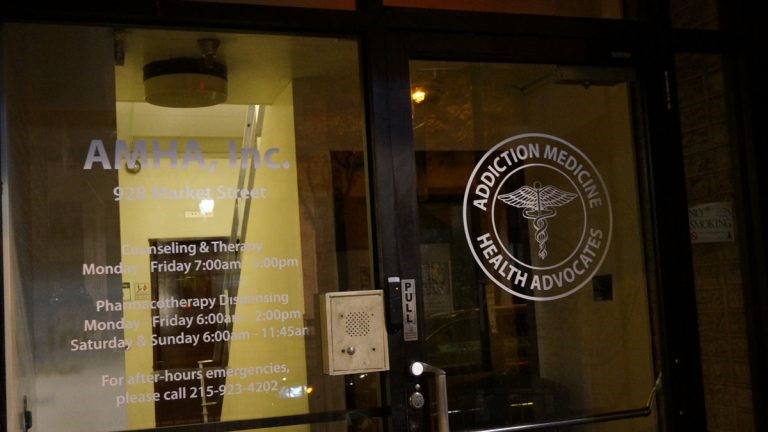Methadone Clinics Eldridge IA
Home
Methadone Clinics Eldridge IA Information
Pharmacokinetics In Special Populations Pregnancy The disposition of oral methadone has been studied in approximately 30 pregnant patients in the second and third trimesters. These problems are more likely to occur when methadone is first started or in people who were not taking other opioid pain medications. If this is the case, youʼll just need to enter the CAPTCHA code once, and weʼll be able to distinguish between you and the other users on your IP address.
Many people have successfully overcome their addiction by using methadone during detoxification and maintenance programs. Pharmacokinetics In Special Populations Pregnancy The disposition of oral methadone has been studied in approximately 30 pregnant patients in the second and third trimesters. Exactly how it works isn't known, but it binds the opiate receptors in the central nervous system, altering the perception of and emotional response to pain. Anxious or nervous feeling Trouble getting to sleep Drowsiness Weak feeling Nausea Vomiting Dry mouth Constipation Diarrhea Loss of appetite Impotence Decreased sex drive There are other side effects that are considered to be more serious.
Even more Information Around methadone high effects

More Resources For methadone high effects Eldridge IA
However, an expert review of published data on experiences with methadone use during pregnancy by the Teratogen Information System (TERIS) concluded that maternal use of methadone during pregnancy as part of a supervised, therapeutic regimen is unlikely to pose a substantial teratogenic risk (quantity and quality of data assessed as “limited to fair”). The greatest concentrations of clinics are in California, Maryland, New York, and New Jersey. For additional information: www.fda.gov/REMS US BOXED WARNINGS: ADDICTION, ABUSE, and MISUSE: This drug exposes patients and other users to the risks of opioid addiction, abuse, and misuse, which can lead to overdose and death.
Below are Some More Information on methadone after heroin
Careful monitoring is recommended when using methadone in patients with a history of cardiac conduction abnormalities, those taking medications affecting cardiac conduction, and in other cases where history or physical exam suggest an increased risk of dysrhythmia. Uses: For the treatment of moderate to severe pain not responsive to non-narcotic analgesics. Taking more than the prescribed amount can lead to an overdose. Tell your health-care provider about any negative side effects from prescription drugs.
A lot more Resources For is methadone an opiate blocker Eldridge IA
Opioid detoxification[edit] Methadone is approved in the US, and many other parts of the world, for the treatment of opioid addiction. Unmetabolized methadone and its metabolites are excreted in urine to a variable degree. 3 times a human daily oral dose of 120 mg/day, based on body surface area comparison. 1%): Hemorrhagic urticaria[Ref] Sweating often persists during chronic administration.[Ref] Hepatic Uncommon (0. Opiate addiction can lead to a number of consequences include health related problems, legal troubles, financial distress and potentially death. We got some B12 injections that work great...from getcanadiandrugs.com Please read over my journal entries...this stuff makes a huge difference. It also carries the risk of being habit forming. ...Methadone, sold under the brand name Dolophine among others, is an opioid used to treat pain and as maintenance therapy or to help with tapering in people with opioid dependence.[3] Detoxification using methadone can either be done relatively rapidly in less than a month or gradually over as long as six months.[3] While a single dose has a rapid effect, maximum effect can take five days of use.[3] The pain relieving effects last about six hours after a single dose, similar to that of morphine.[3][5] After long term use, in people with normal liver function, effects last 8 to 36 hours.[3][4] Methadone is usually taken by mouth and rarely by injection into a muscle or vein.[3] Side effects are similar to those of other opioids.[3] Commonly these include dizziness, sleepiness, vomiting, and sweating.[3] Serious risks include opioid abuse and a decreased effort to breathe.[3] Abnormal heart rhythms may also occur due to a prolonged QT interval.[3] The number of deaths in the United States involving methadone poisoning declined from 4,418 in 2011[6] to 3,300 in 2015.[7] Risks are greater with higher doses.[8] Methadone is made by chemical synthesis and acts on opioid receptors.[3] Methadone was developed in Germany around 1937 to 1939 by Gustav Ehrhart and Max Bockmühl.[9][10] It was approved for use in the United States in 1947.[3] Methadone is on the World Health Organization's List of Essential Medicines, the most effective and safe medicines needed in a health system.[11] Globally in 2013, about 41,400 kilograms were manufactured.[12] It is regulated similarly to other narcotic drugs.[13] It is not particularly expensive in the United States.[14] Contents Medical uses[edit] Methadone maintenance[edit] Methadone is used for the treatment of opioid dependency. Reported studies have generally compared the benefit of methadone to the risk of untreated addiction to illicit drugs.
Click Here for More Information
Previous Next
You may also like:
Methadone Clinics Westville IN
Methadone Clinics Menasha WI
Methadone Clinics Fairmont MN
Methadone Clinics Independence KY
Methadone Clinics Greenbriar VA